Growing Up with Chernobyl
By Robert Chesser, Robert J. Baker
Working in a radioactive zone, two scientists learn tough lessons about politics, bias and the challenges of doing good science
Working in a radioactive zone, two scientists learn tough lessons about politics, bias and the challenges of doing good science

DOI: 10.1511/2006.62.542
The summer of 1994 was our first season together in the Chernobyl Exclusion Zone, a region within a 30-kilometer radius of the Chernobyl Nuclear Power Plant. We were there to investigate the long-term biological effects of ionizing radiation following the catastrophic explosion and fire at reactor number four on April 26, 1986, which released plumes of radionuclides that spread across Europe.
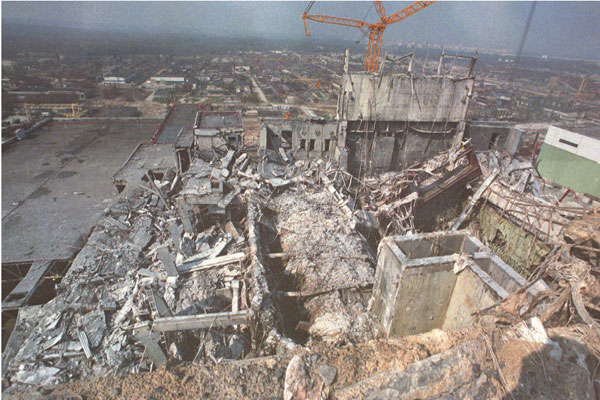
Igor Kostin/Sygma/Corbis
We were only 2 kilometers from the defunct power plant, and the area was still so radioactive that our Geiger counters were perpetually abuzz. Although the "Zone" was now nearly deserted—more than 135,000 people had been evacuated from the region—we were amazed by the diversity of mammals living in the shadow of the ruined reactor only eight years after the meltdown. The odd juxtaposition was eerily reminiscent of one of the creepier Twilight Zone episodes.
We were in an area known as the "red forest," so named from the predominant hue of the trees, which had been discolored in death by the radiation. All the pine trees were dead; only birches remained. During our excursion through the woods, we trapped some of the local mice for examination in a makeshift laboratory. We were surprised to find that although each mouse registered unprecedented levels of radiation in its bones and muscles, all the animals seemed physically normal, and many of the females were carrying normal-looking embryos. This was true for pretty much every creature we examined—highly radioactive, but physically normal. It was the first of many revelations.
We have now spent 12 years trying to sort out the effects of a radioactive environment on the local wildlife. We have performed a variety of experiments in the Zone. In one of our earliest studies, we found that the resident mouse population did not have any obvious chromosomal damage. We wondered whether the absence of injury could be explained by some sort of adaptive change, perhaps a more efficient DNA-repair mechanism, after many prior generations of exposure to radiation. But when we transplanted wild mice from uncontaminated regions into cages in the red forest and then examined their chromosomes, they were likewise unaffected by the radiation. In at least this respect, the mice seemed to have a natural "immunity" to harm from radiation. We repeated the cage experiments with Big Blue transgenic mice—which carry a gene that glows "blue" if it undergoes a mutation—and radiosensitive mice to look for evidence of chromosome breakage, genetic aberrations and changes in gene expression. The genetic impacts proved to be subtle and not likely to threaten the rodent's reproductive success or longevity. We also compared the genetic variations of populations inside the Zone with those from relatively uncontaminated areas, and we found no evidence of increased mutation rates from exposure to radioactivity.
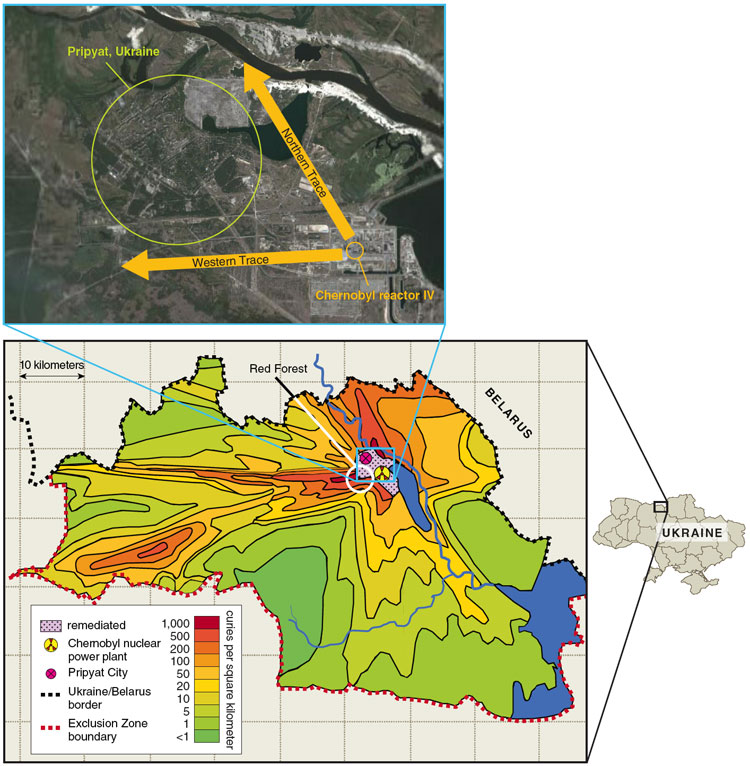
Satellite image courtesy of Google/TerraMetrics; illustration by Barbara Aulicino.
It turns out that the nascent field of radioecology is much more complicated than we had expected. Radioactive fallout from the Chernobyl accident was not deposited uniformly around the reactor. Distinct "excursions," known as the northern and western traces, carried the ash in plumes across the countryside and through the city of Pripyat, a mere 3 kilometers from the power plant. This produced a mosaic of radioactive habitats that are separated by relatively unaffected areas. Such heterogeneity makes it difficult to evaluate the effects on animal populations because animals from "clean" habitats might migrate into the contaminated areas. The complexity of the habitats is exacerbated by the presence of non-radioactive pollutants. Vincent Bahryaktor, vice president of the Ukrainian Academy of Sciences, has said that "Northern Ukraine is the cleanest part of our country; it has only radiation." Unfortunately, this isn't quite true. Decades of uncontrolled waste management have contaminated the region with heavy metals, petrochemicals and pesticides.
Radiation doses have declined precipitously since the accident—less than 3 percent of the initial radioactivity remains. Nevertheless, the Chernobyl Exclusion Zone still offers a unique outdoor laboratory to examine the fate and the effects of a radioactive environment. The abandoned city of Pripyat is now largely a forest with buildings poking above the treetops. After the initial decline of the animal populations, which were decimated by radioactive fallout, wildlife is now thriving. The region has become a refuge for released populations of Przewalski's horse and European bison. The population densities of Russian wild boar are 10 to 15 times greater in the Zone than in adjacent areas inhabited by people. Endangered black storks and white-tailed eagles are also more common in the Zone. The "Exclusion Zone" has effectively become a preserve.
We were completely taken aback by what we saw that first summer in Chernobyl, and we continue to be challenged by what we encounter in that strangely beautiful environment. Our endeavors have led to some of the happiest and bleakest moments in our professional lives. We now recognize that we were terribly naive about radioecology and the politics of scientific research when we first started this work. But we've gained some wisdom along the way, and here we'd like to share what we've learned from our experiences in the form of brief lessons.
It may be a cliché, but it seems that nearly everyone must learn this lesson at some point in their scientific careers. In our case, the beautiful theory involved little rodents, voles of the genus Microtus. We found a great deal of genetic variation when we first examined the voles within the Exclusion Zone, and because the genetic differences were linked to different sites within the Zone, we naturally assumed that the variations were caused by diverse exposures to radiation. To our chagrin, a chromosomal analysis revealed that we were actually studying the natural variation of four species of Microtus, not a single species, as we had believed. It was evolutionary time, not mutagenic radiation, that accounted for the genetic differences we observed.
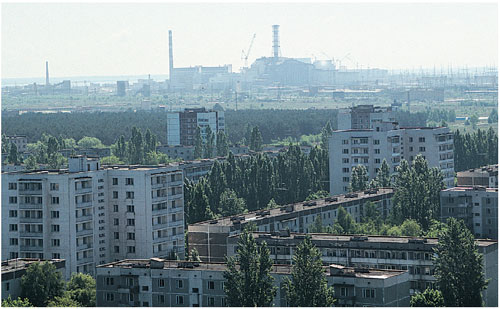
Photograph courtesy of the authors.
What had promised to be a quick exposé of the radiation effects from the Chernobyl fallout proved to be a lesson in taxonomy. It also revealed a prejudice we had about the potential effects of radiation. We caught the error early in our investigations, but we were still disappointed. We hadn't traveled halfway across the globe and hiked through radiation-contaminated forests to conduct studies in species classification, but that was exactly what we had to do if we were to move onto the meaningful phase of our work.
Before we worked at Chernobyl, our expertise was limited to evolutionary genetics. Our understanding of radiation dose rates, especially in rodents, was almost zero. When we entered Chernobyl, most animal studies assumed that individuals from the same location would have similar dose rates and that the rates were proportional to the animal's distance from the source, in this case a damaged reactor. Neither of these assumptions proved to be correct. Mice living in the same habitat vary considerably in how much radiation they are exposed to externally from the soils and the vegetation, and internally from things they have ingested. Our analyses showed that we must examine the internal and external doses for each individual, rather than relying on population averages or the animal's proximity to the reactor.
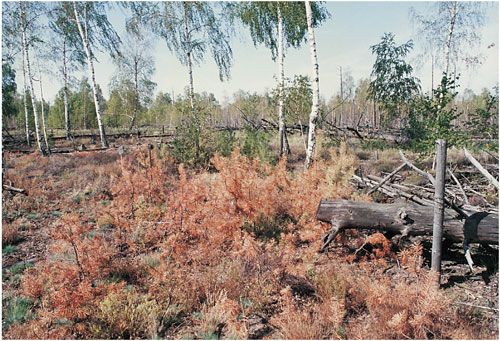
Photograph courtesy of the authors.
So we immersed ourselves in the study of radioisotopes. The predominant radionuclides remaining in Chernobyl are strontium-90 and cesium-137. These isotopes emit different amounts of energy, through particles and photons, so the radiation an animal receives depends on its relative exposure to these radioisotopes. Also, it turns out that cesium accumulates in muscle and other soft tissues, whereas strontium is deposited in teeth and bones. We studied the energies of the particles and photons emitted by these radioisotopes, and we learned how to estimate the probabilities that these energies will be absorbed by air, soil and biological tissues. These are nontrivial tasks, and even today we are still refining some of the mathematical formulations to improve our estimates.
We failed to anticipate that such intricacies would force us to become familiar with other branches of science. Indeed, it's been said that science advances so quickly that its practitioners must run as hard as they can—like the Red Queen in Lewis Carroll's Through the Looking-Glass—just to stay in the same place. We learned that sometimes you also have to change your course just to stay on top of things.
Animal populations have natural variations in both gene frequency and physical traits as a normal product of their evolutionary histories. Populations experience growths, declines, dispersals and local extinctions that may be completely independent of the event that is being investigated—here, an explosive release of lethal radiation. The trick is to come up with a way to distinguish the natural variation from that caused by the agent of interest. This is difficult because we don't have samples of populations in the contaminated zone before the radiation was released.
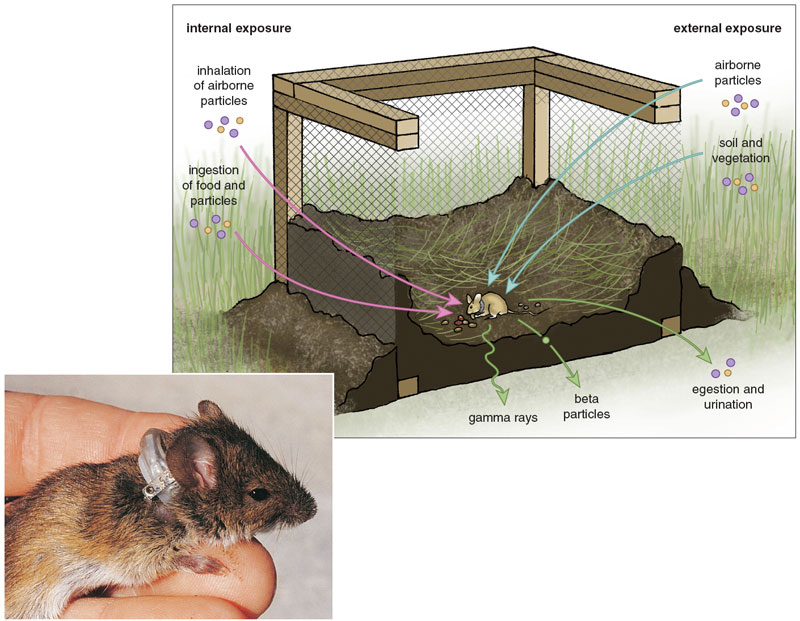
Photograph courtesy of the authors; illustration by Stephanie Freese.
One approach is to assume that nearby populations of the same species that have not been exposed to appreciable amounts of radioactivity will display levels of variations that are similar to those that would have been found in the original population within the contaminated zone before the accident. We use this approach, but not without recognizing its limitations. The "reference" samples are merely pseudo-controls because we cannot be sure that we have accounted for all the factors that might have influenced genetic variation. For example, geographical features—rivers, forests and farmlands—that differ between the regions may affect gene frequencies in unexpected ways. Ecotoxicologists must consider these historical influences if we are to identify the true effects of a contaminating agent.
There's a broad range of opinions on the biological consequences of being exposed to the contaminated environment near Chernobyl. Various studies on wheat, mice, birds and humans have concluded that mutation rates are greatly elevated and that the evolutionary fitness of the organisms is reduced. Other studies have failed to find any increase in the rate of genetic mutations or any evidence that the survival of the animals living near Chernobyl differs from that of those living in clean environments.
We have spent a considerable amount of time trying to understand how applications of the scientific method can produce results that are so contradictory. We could offer a few explanations, including the possibility that some studies simply lack the data to justify the authors' conclusions, but it might be best to offer an example from our own experiences of tasting humble pie. (We should add that human error may not explain all the differences between the studies.)
The April 25, 1996 issue of Naturefeatured on its cover our article concluding that voles living in the Chernobyl environment had an elevated rate of genetic mutation. Our experimental design included double-blind analyses of DNA sequences, the long strings of nucleotides that make up the genetic code. We had determined the genetic sequences manually, a process which involves laborious alignments of genes and even a few judgment calls. Nevertheless, we were confident in our results.
Soon after the paper was published, we acquired an automated sequencer that was more accurate than the manual methods used to sequence DNA. We had archived the tissues from all the animals used in our Nature study, so we decided to re-sequence the genes to compare the methods. To our horror, the automated sequencer failed to replicate the result we reported in Nature. The more accurate method failed to find an elevated mutation rate, even though we repeated the sequencing several times.
We agonized over our options for a few weeks while we were on an expedition to another radioactive site in Chelyabinsk, Russia. After we returned, we knew we had to retract our report. Not all of our seven coauthors agreed. Some thought that we should allow the paper to fade from public scrutiny. Another suggested that our future work would elucidate the true mutation rate. However, Nature is a publication with a high profile, and our original report may well attract more attention than potential reports in other publications. In the end, we all agreed that we had an obligation to the scientific community to come clean, and we published a brief retraction in the November 6, 1997 issue of Nature. It was an important lesson in admitting error and coming to terms with our mistakes.
One day a graduate student brought her laboratory notebook to one of our group meetings. She looked at us, almost in tears, and blurted, "I couldn't find any differences between the experimentals and the controls. What did I do wrong?" We were grateful for her honesty. Our retraction of the Nature paper had shown us that problems in quality control can arise even with the best intentions. Our scrutiny of the published literature reveals that many scientists are less than careful about such matters.
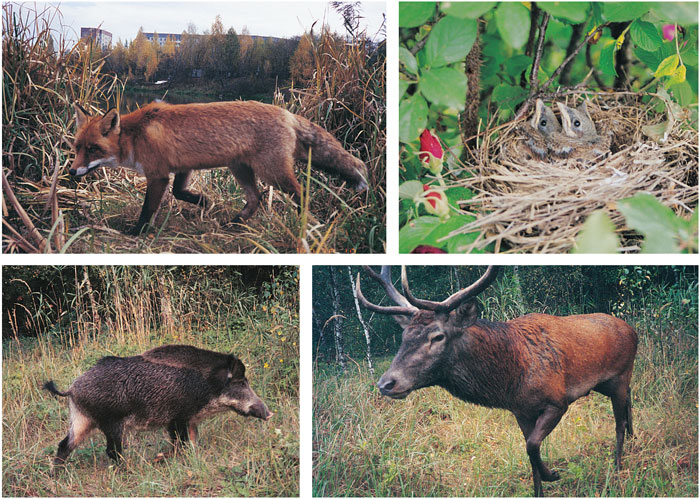
Photographs courtesy of the authors.
Professors, graduate students and technicians all have preconceived ideas of where their data may lead them. We recognized that we weren't immune to such prejudices either, so we had to find a way to prevent our biases from influencing our results. The best approach is a blind analysis, with no knowledge of whether the samples come from the experimental or the control groups. (We now have a secretary codify all the sample tubes.) After we complete the analysis, we then decode and classify our data.
Right or wrong, at least we know that the results were not affected by our personal prejudices. A scientist should always be ready to change his mind. Once a scientist resists alternative explanations, he is no longer a useful decision maker. Blind studies are the antithesis of blind ambition.
Some reports on the biological impacts of the fallout from Chernobyl seem to lie outside the bounds of reasonable expectations. One study reported that barn swallows, collected from northern Ukraine, were experiencing partial albinism and increased germline mutation rates, with a concomitant loss of evolutionary fitness. Unfortunately, the authors did not identify exactly where the birds were collected, they did not evaluate the radiation doses to the birds and they provided little information on the level of soil contamination. In contrast, our own investigations of swallows collected in a 10-kilometer zone surrounding the reactor reveals that the internal radiation doses are negligible—less than 10 microsieverts per day. That dose rate is less than one-tenth of a typical chest x ray, or about the same for three hours of flight at 35,000 feet. It would be astonishing if that dose were responsible for the elevated mutation rates reported by the authors.
It's also the case that local genetic variations are common in natural animal populations. It would be surprising to find populations without geographic variations. The authors of the barn-swallow article inferred that the variation among the birds was the result of radiation-induced mutations, but they did not provide any evidence for their assertion. They did not eliminate the possibility that the geographic variations were natural, or that the mutations might have been caused by something else. Moreover, some of the same barn-swallow variants have been found in regions not affected by Chernobyl, suggesting that they may not be uncommon. In our opinion, their incredible conclusions were supported only by circumstantial evidence.
Chernobyl is known the world over as the worst nuclear power plant disaster in history. We naively assumed that this name recognition, and a good scientific plan, would quickly yield financial support for our research. On one of our funding forays to Washington we presented what we thought was a well-designed plan on the scientific merits of our proposed research at Chernobyl. Afterward, one of the politicians said, "Okay, that was fine ... now, how do I sell this to my fellow congressmen?" We exchanged glances with each other that said, "didn't we just answer that question?"
Later we realized that we hadn't provided him with anything useful for his agenda. Good science is a beautiful thing, but it must fit within an existing framework of policy and strategic plans or it will be very difficult to finance. Our great scientific proposal floated away like a helium-filled balloon with no string tying it down to political reality.
Policy makers want concrete conclusions and results, not probability estimates on the relative dangers of radiation exposure, which turns out to be less hazardous than generally believed. Many public servants do not share the scientist's enthusiasm for the scientific process. They make laws that distinguish right from wrong, while we spend 95 percent of our time trying to explain 5 percent of the variation of a phenomenon.
Ultimately, we were successful in securing funds for several years of research, and we have since built the International Radioecology Laboratory in Slavutych, Ukraine. But it hasn't been easy, and most prospects for future funding look bleak.
In this year's 20th-anniversary reports on the Chernobyl accident, news outlets variously claimed that the disaster had resulted in 93,500, 70,000, 4,000, hundreds or just 31 human deaths. We couldn't find a single story that tried to explain the enormous difficulties of determining an accurate number for the excess cancer deaths caused by the radiation fallout from Chernobyl. The press did not attempt to explain the differences in opinions between scientists or the contradictory results of research on animals exposed to radiation. Instead, advocacy groups pointed their fingers at scientists and asked why they were trying to cover up the "real" impact of radiation on people and the environment.
Scientists often find themselves in unpopular and uncomfortable positions. That's just part of the job when you have to report the truth. A scientist's conclusions help to guide public policy, write regulations and develop new technologies. The results of good science are simply too important to be swayed by emotional appeals. Unfortunately, poor science often gets great publicity, especially if it stirs controversy or implies that governments are recklessly endangering the lives of their citizens. In the long run, poor science will beget poor policy.
Twenty years have passed since the accident at Chernobyl, yet the extent to which people, animals and the environment have been harmed is hotly debated. The conflicting reports on the genetic and biological impacts of environmental radiation make it difficult for even the most seasoned scientist to make sense of all the data. Remarkably, there is still no accurate account of the number of deaths or birth defects caused by the disaster. Investigations into the effects of ionizing radiation on living organisms should be based on sound scientific principles for the simple reason that risk assessments, regulatory statutes and the effectiveness of remediation measures are often based on these reports. The public and scientific communities need to recognize that ecological studies on Chernobyl that do not include accurate information on animal exposure do not qualify as radiological research.
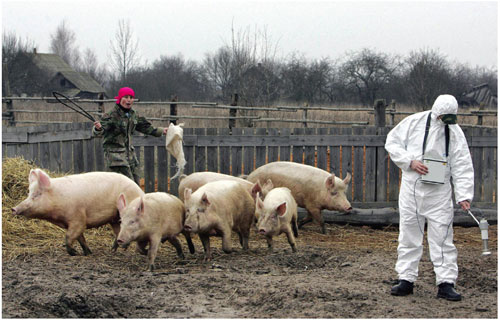
Photograph courtesy of the authors.
The proper null hypothesis should be that the effects of the Chernobyl environment on an organism do not differ from effects outside the environment. Falsification of the null hypothesis has profound implications for society. If there is an elevated mutation rate and loss of health, then appropriate measures should be taken to protect ourselves. No one would argue with that. But we must be mindful that the costs of over-regulation can be extreme. Zbigniew Jaworowski, former chairman of the United Nations Scientific Committee on the Effects of Atomic Radiation, has estimated that enforcing the radiation-safety regulations in the U.S. costs about three billion dollars for each life saved from accidental exposure. By comparison, the measles vaccine costs $99 per life saved.
We believe the problem requires a coordinated effort that enforces standards of data gathering and assessment. This effort would establish protocols for collegial verification of results and preserve samples for future studies. Without such coordination, we will fritter away meager resources on disconnected and unrepeatable studies. We should endeavor now, while the signatures of released radiation remain on the landscape and in the affected organisms, to solve the issues of environmental health and safety.
Click "American Scientist" to access home page
American Scientist Comments and Discussion
To discuss our articles or comment on them, please share them and tag American Scientist on social media platforms. Here are links to our profiles on Twitter, Facebook, and LinkedIn.
If we re-share your post, we will moderate comments/discussion following our comments policy.